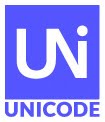 Unicode CLDR 27 has been released, providing an update to the key building blocks for software supporting the world's languages. This data is used by all major software systems for their software internationalization and localization, adapting software to the conventions of different languages for such common software tasks.
Unicode CLDR 27 has been released, providing an update to the key building blocks for software supporting the world's languages. This data is used by all major software systems for their software internationalization and localization, adapting software to the conventions of different languages for such common software tasks.There was no Survey Tool data collection phase for CLDR 27. Instead, the release focused primarily on stability—cleaning up data inheritance and making specific fixes—as well as improvements to the JSON format of the data. Changes include the following:
- Cleanup of region locales: A major cleanup effort was undertaken to resolve gratuitous differences between region-specific locales and the parent from which they inherit. In regional locales, it was determined where the parent value was an acceptable replacement for a child-specific value which could then be removed, providing greater consistency in behavior in the various region locales. A special effort was made to clean up country names in certain locales.
- Changes to English inheritance: As an outcome of the cleanup effort above, the inheritance model for English locales is now simplified, making all en_XX locales inherit from either “en” directly ( for current or former U.S. territories ), or from British-influenced “en_001 - World English”. This is also reflected in some changes for measurement systems.
- Emoji: Data for emoji annotations and an emoji collation were added, to accompany Unicode Technical Report #51, Unicode Emoji.
- Collation: There are new sort orders for emoji (as noted above), and an Austrian phonebook sort order. Scripts can be reordered individually, rather than only in specific groups. Fractional tertiary weights are now used that are lower than common, to allow shorter sort-keys with normal Hiragana letters.
- Specification: The LDML specification has descriptions of new or modified structure, plus a number of fixes and clarifications. See Modifications for a list of changes.
- Improved documentation of locale inheritance and matching, bundle versus item lookup, and parent locale information.
- Extensive clarifications to the intended use of the language matching data.
- Explicit new definitions of Unicode identifiers, such as Unicode Calendar Identifier, for use in citations.
- Charts: The navigation within charts has been improved, and new ones added:
- Delta charts, showing detailed changes from v26 to v27.
- Day periods, showing the new day period selectors.
- Emoji Annotations, showing provisional annotations in English and 21 other locales.
- Territory Information, split out of Language Territory Information for easier viewing.
- JSON on github: The JSON form of the data is now available on github, rather than being found through the Data link.


 The Unicode Collation Algorithm (UCA) data is being modified to make all digits with the same numeric value sort the same, whether they are European (ASCII), Arabic, Devanagari, or others. In addition, the format of the main data table has changed to omit the (unused) 4th level weight, and some data tables are moved to the Unicode CLDR project.
The Unicode Collation Algorithm (UCA) data is being modified to make all digits with the same numeric value sort the same, whether they are European (ASCII), Arabic, Devanagari, or others. In addition, the format of the main data table has changed to omit the (unused) 4th level weight, and some data tables are moved to the Unicode CLDR project.

